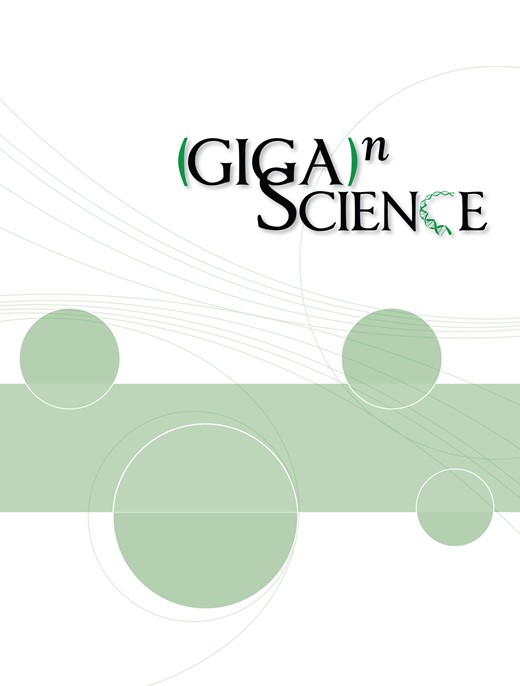Large-scale genomic survey with deep learning-based method reveals strain-level phage specificity determinants
IF 11.8
2区 生物学
Q1 MULTIDISCIPLINARY SCIENCES
引用次数: 0
Abstract
Background Phage therapy, reemerging as a promising approach to counter antimicrobial-resistant infections, relies on a comprehensive understanding of the specificity of individual phages. Yet the significant diversity within phage populations presents a considerable challenge. Currently, there is a notable lack of tools designed for large-scale characterization of phage receptor-binding proteins, which are crucial in determining the phage host range. Results In this study, we present SpikeHunter, a deep learning method based on the ESM-2 protein language model. With SpikeHunter, we identified 231,965 diverse phage-encoded tailspike proteins, a crucial determinant of phage specificity that targets bacterial polysaccharide receptors, across 787,566 bacterial genomes from 5 virulent, antibiotic-resistant pathogens. Notably, 86.60% (143,200) of these proteins exhibited strong associations with specific bacterial polysaccharides. We discovered that phages with identical tailspike proteins can infect different bacterial species with similar polysaccharide receptors, underscoring the pivotal role of tailspike proteins in determining host range. The specificity is mainly attributed to the protein’s C-terminal domain, which strictly correlates with host specificity during domain swapping in tailspike proteins. Importantly, our dataset-driven predictions of phage–host specificity closely match the phage–host pairs observed in real-world phage therapy cases we studied. Conclusions Our research provides a rich resource, including both the method and a database derived from a large-scale genomics survey. This substantially enhances understanding of phage specificity determinants at the strain level and offers a valuable framework for guiding phage selection in therapeutic applications.利用基于深度学习的方法进行大规模基因组调查,揭示菌株级噬菌体特异性决定因素
背景噬菌体疗法作为一种很有前景的方法,正在重新成为对抗抗菌药物耐药性感染的手段,它依赖于对单个噬菌体特异性的全面了解。然而,噬菌体种群的巨大多样性带来了相当大的挑战。目前,用于大规模鉴定噬菌体受体结合蛋白的工具明显缺乏,而受体结合蛋白对确定噬菌体宿主范围至关重要。结果 在本研究中,我们介绍了基于 ESM-2 蛋白语言模型的深度学习方法 SpikeHunter。通过 SpikeHunter,我们在 5 种具有毒性、抗生素耐药性的病原体的 787566 个细菌基因组中鉴定出了 231965 种不同的噬菌体编码的尾穗蛋白,这是决定噬菌体特异性的一个关键因素,它以细菌多糖受体为目标。值得注意的是,这些蛋白质中有 86.60% (143,200 个)表现出与特定细菌多糖的紧密联系。我们发现,具有相同尾穗蛋白的噬菌体可以感染具有相似多糖受体的不同细菌种类,这突出表明了尾穗蛋白在决定宿主范围方面的关键作用。这种特异性主要归因于蛋白质的 C 端结构域,它与尾梭蛋白结构域交换过程中的宿主特异性密切相关。重要的是,我们根据数据集预测的噬菌体-宿主特异性与我们研究的真实世界噬菌体治疗案例中观察到的噬菌体-宿主对密切吻合。结论 我们的研究提供了丰富的资源,包括从大规模基因组学调查中获得的方法和数据库。这大大增强了人们对菌株水平上噬菌体特异性决定因素的了解,并为指导治疗应用中的噬菌体选择提供了宝贵的框架。
本文章由计算机程序翻译,如有差异,请以英文原文为准。
求助全文
约1分钟内获得全文
求助全文
来源期刊

GigaScience
MULTIDISCIPLINARY SCIENCES-
CiteScore
15.50
自引率
1.10%
发文量
119
审稿时长
1 weeks
期刊介绍:
GigaScience seeks to transform data dissemination and utilization in the life and biomedical sciences. As an online open-access open-data journal, it specializes in publishing "big-data" studies encompassing various fields. Its scope includes not only "omic" type data and the fields of high-throughput biology currently serviced by large public repositories, but also the growing range of more difficult-to-access data, such as imaging, neuroscience, ecology, cohort data, systems biology and other new types of large-scale shareable data.
 求助内容:
求助内容: 应助结果提醒方式:
应助结果提醒方式:


